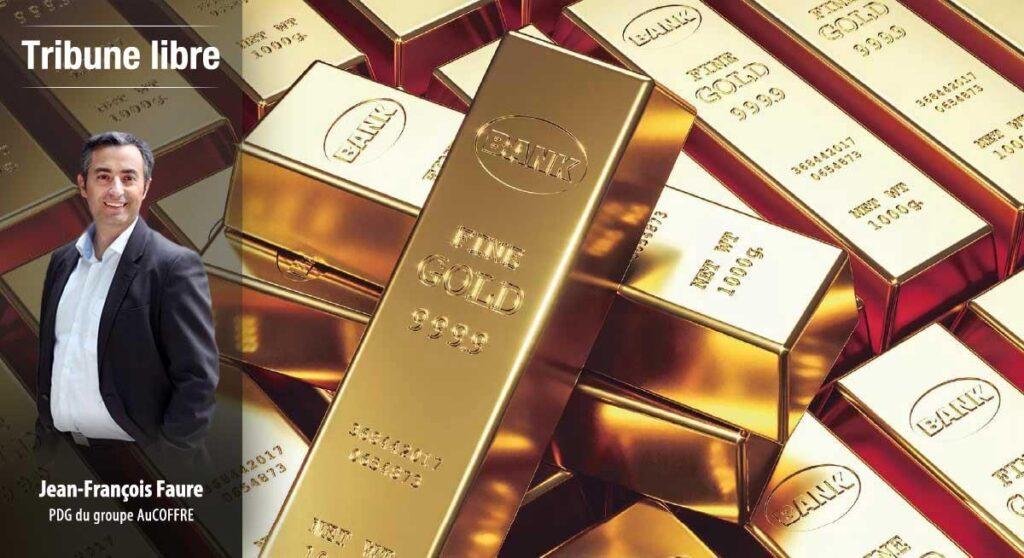For the first time in more than 40 years, gold price fluctuations are subject to significant and sustained inflation. How does it react? Not as expected... Analysis by Jean-François Faure, precious metals specialist and CEO of the AuCOFFRE group.

Basic rule: gold is a tangible asset; when the value of money falls, gold rises in price. In other words, the price of gold should rise. Thus, logic dictates that the price for it, at present, will also increase. However, with monetary authorities acknowledging persistent inflation, things are not looking very rosy. Why?
Anti-inflation remedies are a real evil for gold
First of all, the actions taken by central banks to curb inflation are unfavorable for gold. Raising interest rates, especially by the US Federal Reserve, tightening monetary policy has two important consequences for the price of gold.
Competitor for long-term investment
Investors choose gold because of its low long-term volatility. These are investments considered safe, protective, but not value-creating. Indeed, gold does not generate interest or dividends. His report is limited to any capital gains realized between the purchase price and the resale price.
End of interest rates at 0%
Treasuries or government bonds have yielded nothing throughout the period of low or even negative rates. In such conditions, gold was more attractive. As rates have risen, bonds have become a serious competitor in the long-term protection and savings market.
Impact of currencies
In the summer of 2022, a very specific phenomenon occurred with the price of gold. Since its value is quoted in dollars, the rate was subject to a downward trend. For the same product ounce of gold (but this time in euros), long-term trends remain bullish. Thus, the price of gold in euros remains around €1,750, which is the level recorded before the start of the war in Ukraine on February 24.
This difference is explained by the strengthening of the dollar after Fed Chairman Jerome Powell raised rates. At the same time, the euro is weakening. So while gold is struggling in the US currency, this is not necessarily the case in the European currency.
If inflation continues, how will gold react?
Everything will depend on the policies of central banks. As we have seen, rising interest rates are not good for gold, as are strengthening currencies. However, we also know that making money “more expensive” leads to lower investment and consumption, which leads to a slowdown in economic activity.

This is also one of the ways to curb inflation. As the economy worsens, the risk of default increases for both corporate and private debt. (Joe Biden just announced a plan to reduce US student debt, estimated at $1.6 trillion).
If bad financial and economic news continues to multiply, gold will regain its role as a safe haven or store of value.
Gold remains quite effective after all
Looking at the price of gold in Euros over the last 12 months (September 2021 – September 2022), the price per ounce has risen from €1,500 to €1,750, an increase of over 16%. Since the beginning of 2022, we have recorded an increase of 8%.
During the same period, the CAC 40 corrected to 9%. We are seeing a slow but steady rise in the price of gold.
Did you like the post? - Share with your friends!
